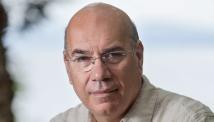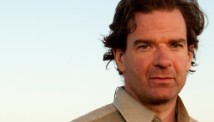A nasty Christmastime storm system spawned blizzard conditions in some states and at least 15 reported tornadoes in the South, damaging homes, taking out power lines and dangerously snarling holiday travel.
Severe weather swept across the United States during the Christmas holiday, bringing tornadoes and intense thunderstorms to the Gulf Coast, while dumping heavy snow and freezing rain on the Southern Plains.
At least 15 tornadoes were reported today from Texas to Alabama, putting this storm system potentially on track to be one of the largest Christmas day tornado outbreaks on record.
One large tornado was reported in Mobile, Ala., where there are about 19,000 customers without power and 23,429 statewide, according to Alabama Power. Kerry Burns, a Mobile resident originally from Boston, said the storm "sounded like a freight train."
Some buildings in the area, including some churches and a local high school, were reportedly damaged. Ray Uballe, another Mobile resident, said his dad was shaken up.
"He was in his apartment," Uballe said. "He said it sounded like an airplane and then the door flung open and then there was just debris flying."
Douglas Mark Nix, president of the Infirmary Health System, said one of their Mobile hospitals lost power and sustained damage. There were no early reports of injuries to staff or patients.
"We are operating now on generator power," he said. "We do not have substantial damage but we do have a number of windows out and we have some ceiling tiles down, throughout the facility at the main hospital.
"We can run for at least two weeks but I saw power crews out all over the city so I fully expect power to be restored within the next day or so," Nix added.
Melinda Martinez/The Daily Town Talk/AP Photo
Winter Weather Causes Holiday Travel Problems Watch Video
At least eight states were issued blizzard warnings today, as the storms made highways dangerously slick heading into one of the busiest travel days of the year.
Oklahoma got about 7 inches of snow all over the state making for treacherous road conditions. ABC News affiliate KOCO-TV in Oklahoma City said the weather was being blamed for a 21-vehicle wreck on Interstate 40, but no one was seriously injured.
Ice accumulation in Arkansas bent trees and power lines, leaving at least 50,000 customers across the state without power. About 10 inches of snow fell on Fayetteville, Ark.
The storms, which first wreaked havoc on the West Coast before moving east, are being blamed for at least one death in Texas.
Investigators in the Houston area told ABC state KTRK-TV in Houston that a young man was trying to move a downed tree that was blocking the roadway when another one snapped and fell on top of him. He was later pronounced dead at a hopsital.
The last time a number of tornadoes hit the Gulf Coast area around Christmas Day was in 2009, when 22 tornadoes struck on Christmas Eve morning, National Weather Service spokesman Chris Vaccaro told ABC News over email.
The deadliest Christmastime tornado outbreak on record was Dec. 24 to 26, 1982, when 29 tornadoes in Oklahoma, Missouri, Arkansas, Tennessee and Mississippi killed three people and injured 32.
The last killer tornado around Christmas, Vaccaro said, was a Christmas Eve EF4 in Tennessee in 1988, which killed one person and injured seven. EF4 tornadoes can produce winds up to 200 mph.
No official word yet on the strength of the string of tornadoes reported today.
While some were preparing for a Christmas feast, others were hunkered down.
More than 180 flights nationwide were canceled by midday, according to the flight tracker FlightAware.com. More than half were canceled by American Airlines and its regional affiliate, American Eagle.
The storm system is expected to continue east into Georgia and the Carolinas Wednesday and could potentially spawn more tornadoes, according to the National Weather Service.
ABC News' Matt Gutman, Max Golembo and ABC News Radio contributed to this report.














